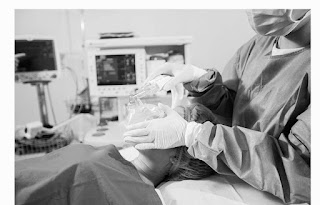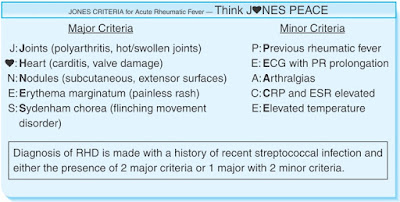Anesthetic Management of the Patient Receiving Herbal Therapy.
Morbidity and mortality associated with herbal use may be more likely in the perioperative period because of the polypharmacy and physiological alterations that occur.
Such complications include bleeding from garlic, ginkgo, and ginseng and potential interaction between ginseng-warfarin. It is especially important for anesthesiologists to be familiar with related literature on herbal medications when caring for patients in the perioperative period.
Garlic
Garlic is one of the most extensively researched medicinal plants. It has the potential to modify the risk of developing atherosclerosis by reducing blood pressure, thrombus formation, and serum lipid and cholesterol levels. The usual dosage is 4 g (∼2 cloves) of fresh bulb or its equivalent as an extract or tincture per day. Garlic inhibits in vivo platelet aggregation in a dose-dependent fashion. The effect of one of its constituents, ajoene, seems to be irreversible and may potentiate the effect of other platelet inhibitors such as prostacyclin, forskolin, indomethacin, and dipyridamole. Although these effects have not been consistently demonstrated in volunteers, there is 1 case in the literature of an octagenarian who developed a spontaneous epidural hematoma that was attributed to heavy garlic use.
Ginkgo
 Ginkgo is derived from the leaf of Ginkgo biloba. It has been used in cognitive disorders, peripheral vascular disease, age-related macular degeneration, vertigo, tinnitus, erectile dysfunction, and altitude sickness.The compounds believed to be responsible for its pharmacological effects are the terpenoids and flavonoids. The usual dosage is 120 to 240 mg of standardized extract per day, in 2 or 3 divided doses. Ginkgo seems to inhibit platelet-activating factor. Clinical trials in a small number of patients have not demonstrated bleeding complications, but 4 reported cases of spontaneous intracranial bleeding have been associated with ginkgo use. A single case report of postlaparoscopic bleeding attributed to Ginkgo biloba has also been reported.
Ginkgo is derived from the leaf of Ginkgo biloba. It has been used in cognitive disorders, peripheral vascular disease, age-related macular degeneration, vertigo, tinnitus, erectile dysfunction, and altitude sickness.The compounds believed to be responsible for its pharmacological effects are the terpenoids and flavonoids. The usual dosage is 120 to 240 mg of standardized extract per day, in 2 or 3 divided doses. Ginkgo seems to inhibit platelet-activating factor. Clinical trials in a small number of patients have not demonstrated bleeding complications, but 4 reported cases of spontaneous intracranial bleeding have been associated with ginkgo use. A single case report of postlaparoscopic bleeding attributed to Ginkgo biloba has also been reported.
 Ginkgo is derived from the leaf of Ginkgo biloba. It has been used in cognitive disorders, peripheral vascular disease, age-related macular degeneration, vertigo, tinnitus, erectile dysfunction, and altitude sickness.The compounds believed to be responsible for its pharmacological effects are the terpenoids and flavonoids. The usual dosage is 120 to 240 mg of standardized extract per day, in 2 or 3 divided doses. Ginkgo seems to inhibit platelet-activating factor. Clinical trials in a small number of patients have not demonstrated bleeding complications, but 4 reported cases of spontaneous intracranial bleeding have been associated with ginkgo use. A single case report of postlaparoscopic bleeding attributed to Ginkgo biloba has also been reported.
Ginkgo is derived from the leaf of Ginkgo biloba. It has been used in cognitive disorders, peripheral vascular disease, age-related macular degeneration, vertigo, tinnitus, erectile dysfunction, and altitude sickness.The compounds believed to be responsible for its pharmacological effects are the terpenoids and flavonoids. The usual dosage is 120 to 240 mg of standardized extract per day, in 2 or 3 divided doses. Ginkgo seems to inhibit platelet-activating factor. Clinical trials in a small number of patients have not demonstrated bleeding complications, but 4 reported cases of spontaneous intracranial bleeding have been associated with ginkgo use. A single case report of postlaparoscopic bleeding attributed to Ginkgo biloba has also been reported.Ginseng
 Among the several species used for pharmacological effects, Asian ginseng and American ginseng are the most commonly described. Ginseng has been labeled an "adaptogen" because it reputedly protects the body against stress and restores homeostasis. The usual dosage is 1 to 2 g of root or 200 mg of standardized extract per day. Ginseng has a broad but incomplete pharmacological profile because it has many heterogeneous and sometimes opposing effects of different ginsenosides. There is a concern of ginseng's effect on coagulation pathways. Ginsenosides inhibit platelet aggregation in vitro and prolong both thrombin time and aPTT in rats. These findings await confirmation in humans. Although ginseng may inhibit the coagulation cascade, ginseng use was associated with a significant decrease in warfarin anticoagulation in 1 reported case.
Among the several species used for pharmacological effects, Asian ginseng and American ginseng are the most commonly described. Ginseng has been labeled an "adaptogen" because it reputedly protects the body against stress and restores homeostasis. The usual dosage is 1 to 2 g of root or 200 mg of standardized extract per day. Ginseng has a broad but incomplete pharmacological profile because it has many heterogeneous and sometimes opposing effects of different ginsenosides. There is a concern of ginseng's effect on coagulation pathways. Ginsenosides inhibit platelet aggregation in vitro and prolong both thrombin time and aPTT in rats. These findings await confirmation in humans. Although ginseng may inhibit the coagulation cascade, ginseng use was associated with a significant decrease in warfarin anticoagulation in 1 reported case.
 Among the several species used for pharmacological effects, Asian ginseng and American ginseng are the most commonly described. Ginseng has been labeled an "adaptogen" because it reputedly protects the body against stress and restores homeostasis. The usual dosage is 1 to 2 g of root or 200 mg of standardized extract per day. Ginseng has a broad but incomplete pharmacological profile because it has many heterogeneous and sometimes opposing effects of different ginsenosides. There is a concern of ginseng's effect on coagulation pathways. Ginsenosides inhibit platelet aggregation in vitro and prolong both thrombin time and aPTT in rats. These findings await confirmation in humans. Although ginseng may inhibit the coagulation cascade, ginseng use was associated with a significant decrease in warfarin anticoagulation in 1 reported case.
Among the several species used for pharmacological effects, Asian ginseng and American ginseng are the most commonly described. Ginseng has been labeled an "adaptogen" because it reputedly protects the body against stress and restores homeostasis. The usual dosage is 1 to 2 g of root or 200 mg of standardized extract per day. Ginseng has a broad but incomplete pharmacological profile because it has many heterogeneous and sometimes opposing effects of different ginsenosides. There is a concern of ginseng's effect on coagulation pathways. Ginsenosides inhibit platelet aggregation in vitro and prolong both thrombin time and aPTT in rats. These findings await confirmation in humans. Although ginseng may inhibit the coagulation cascade, ginseng use was associated with a significant decrease in warfarin anticoagulation in 1 reported case.


